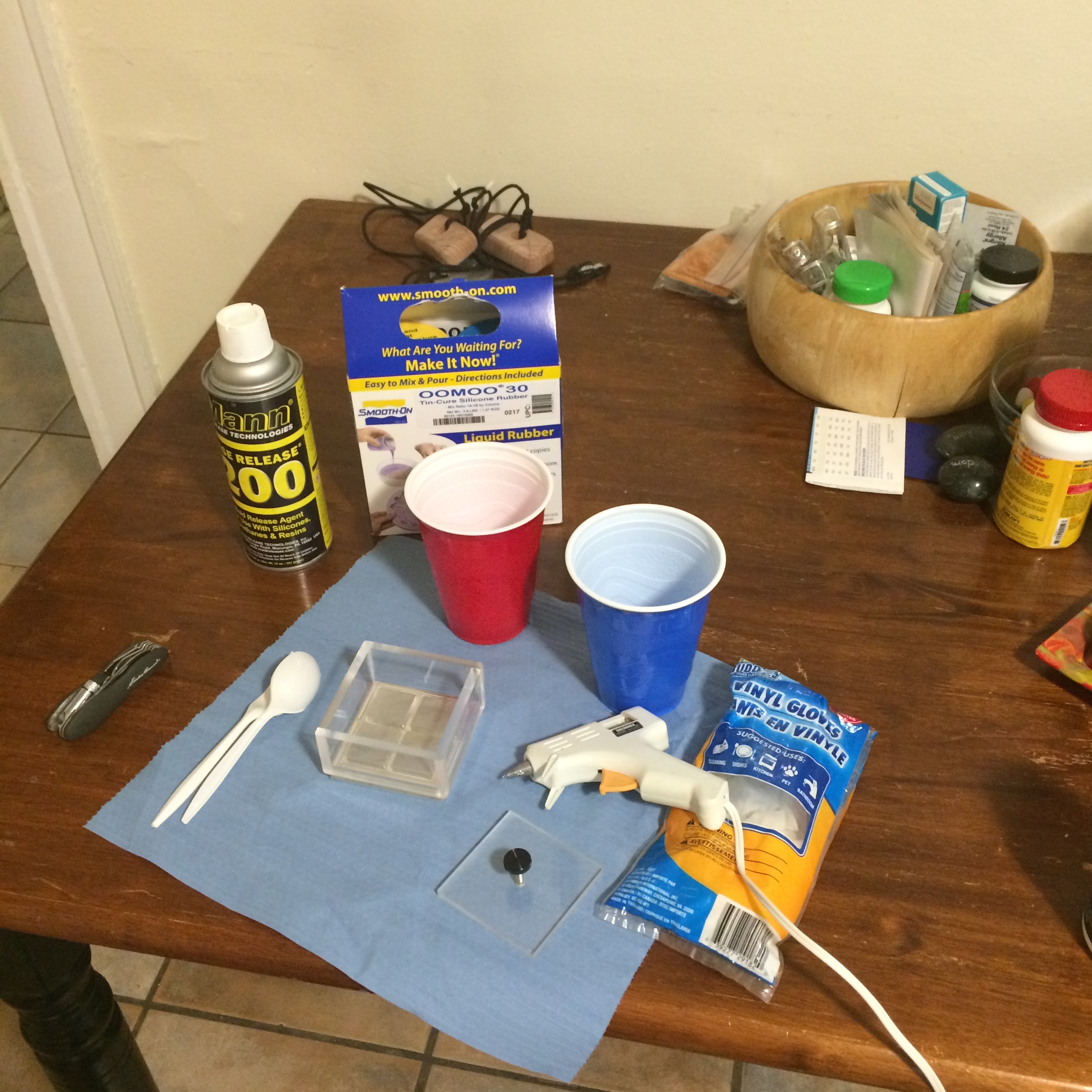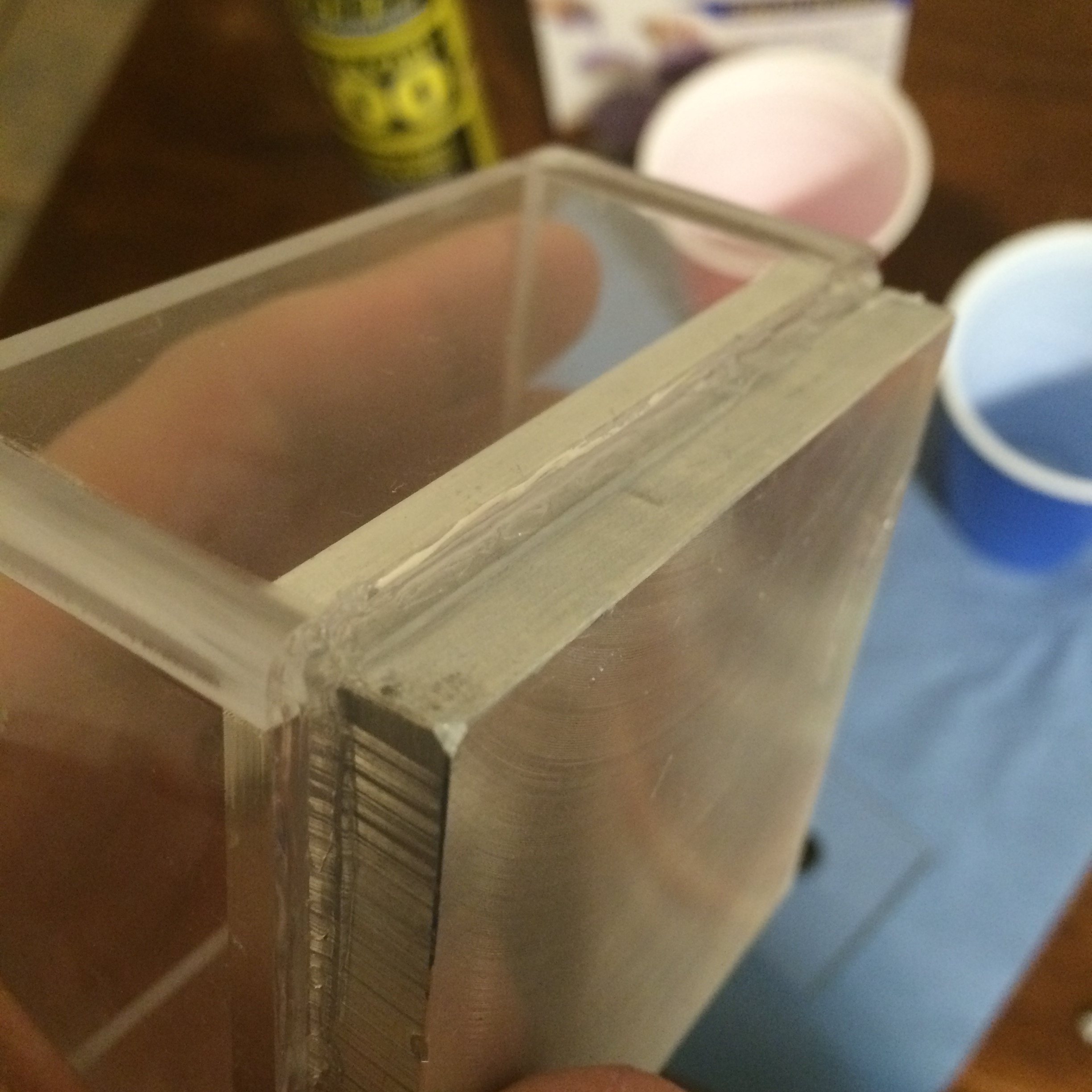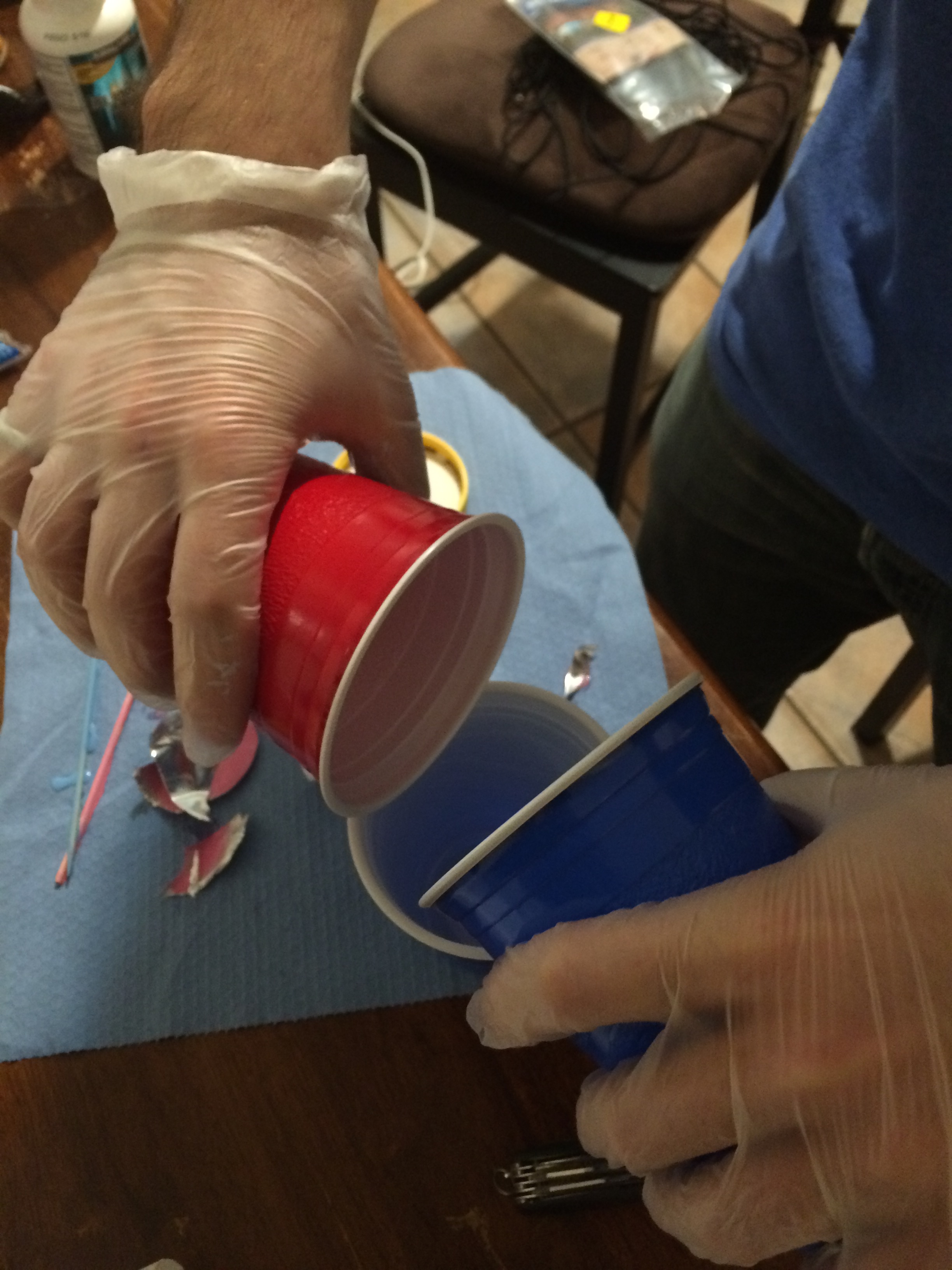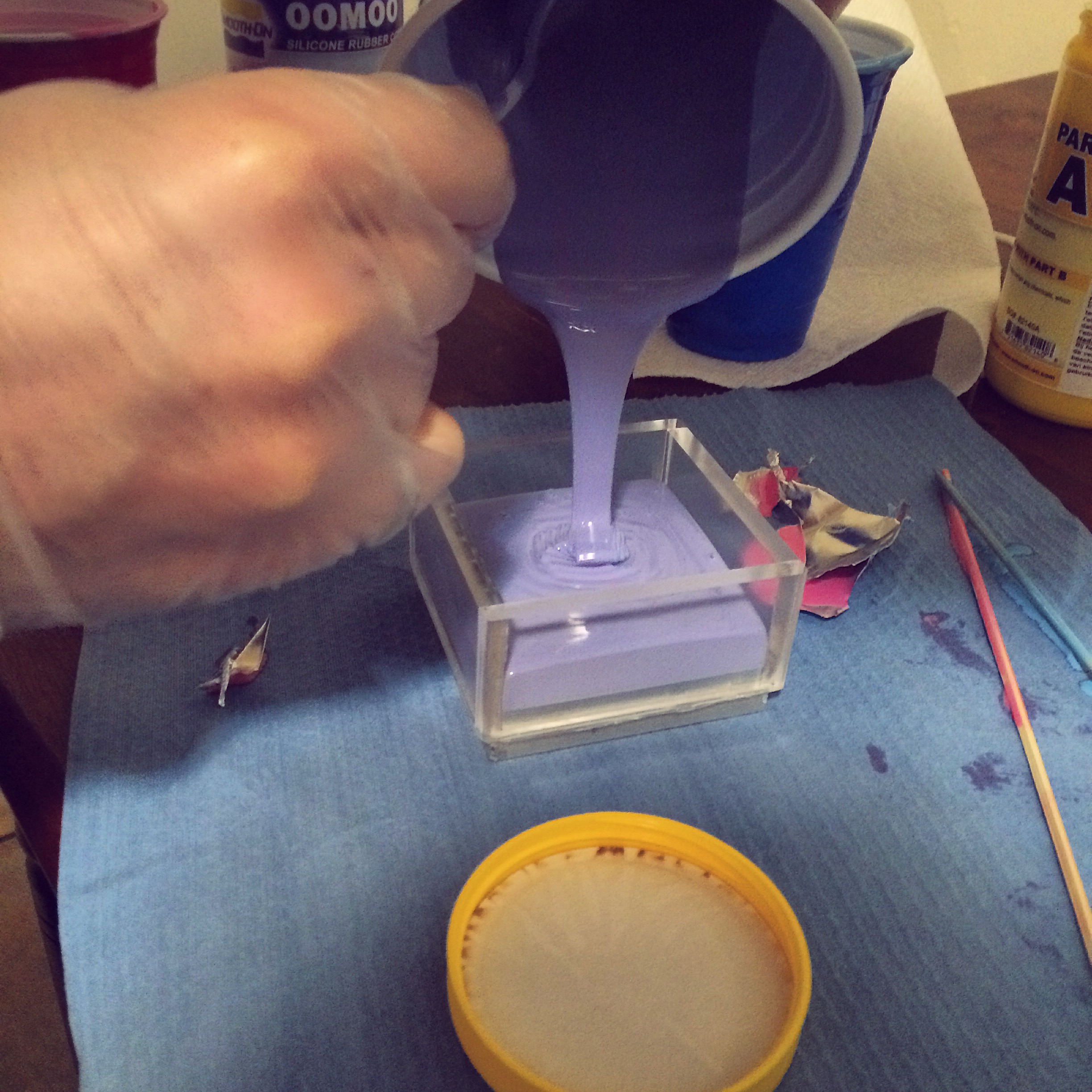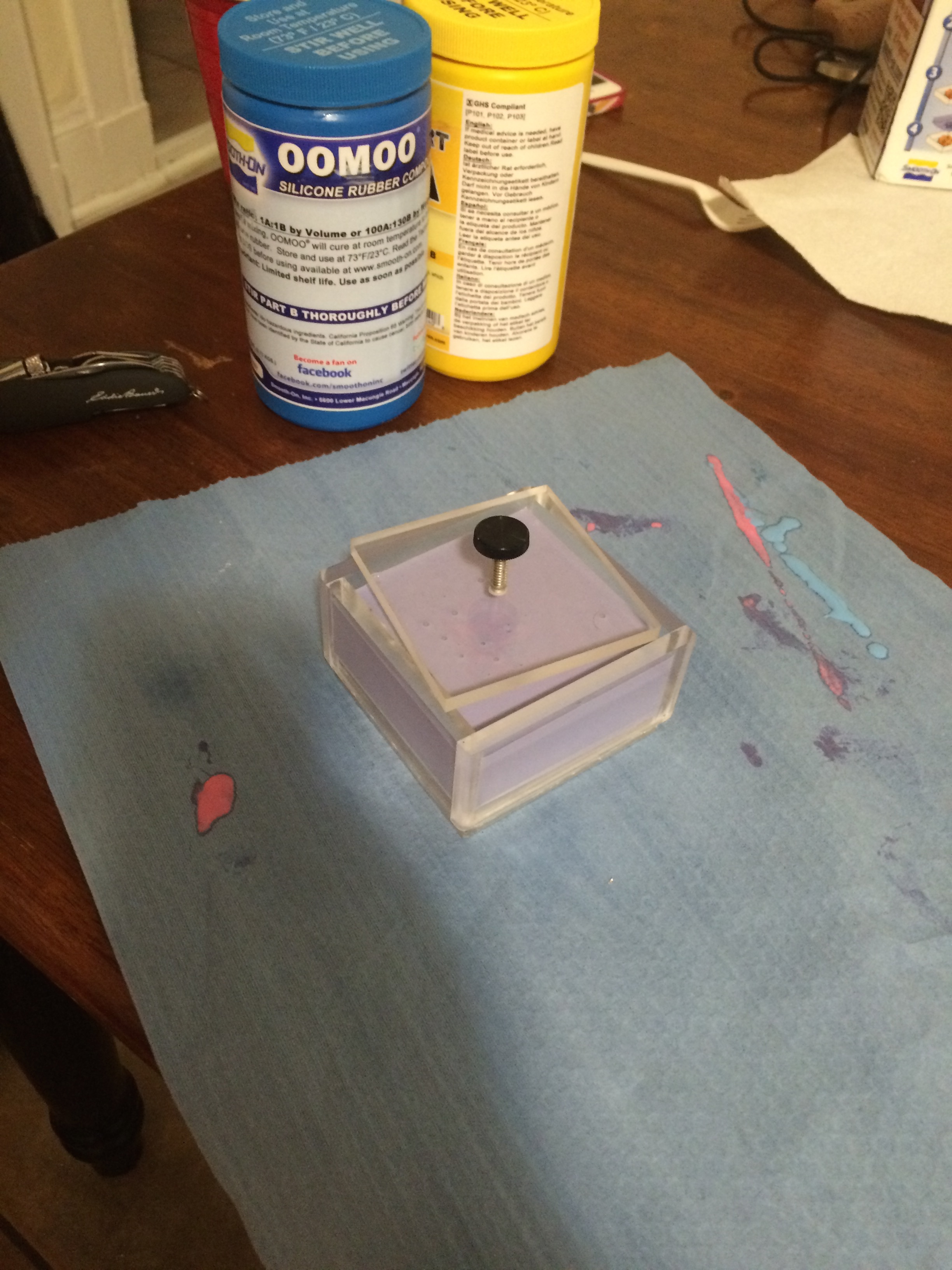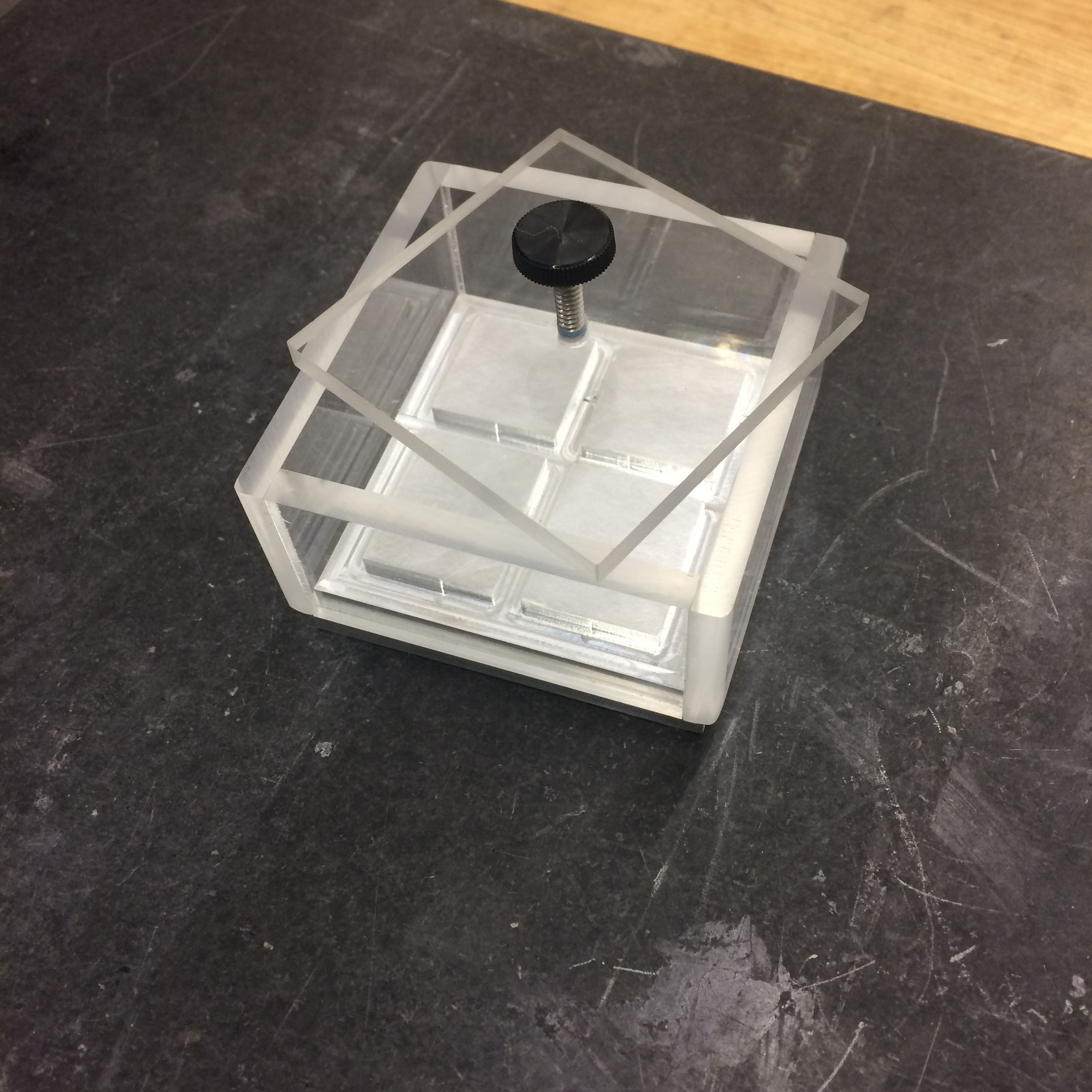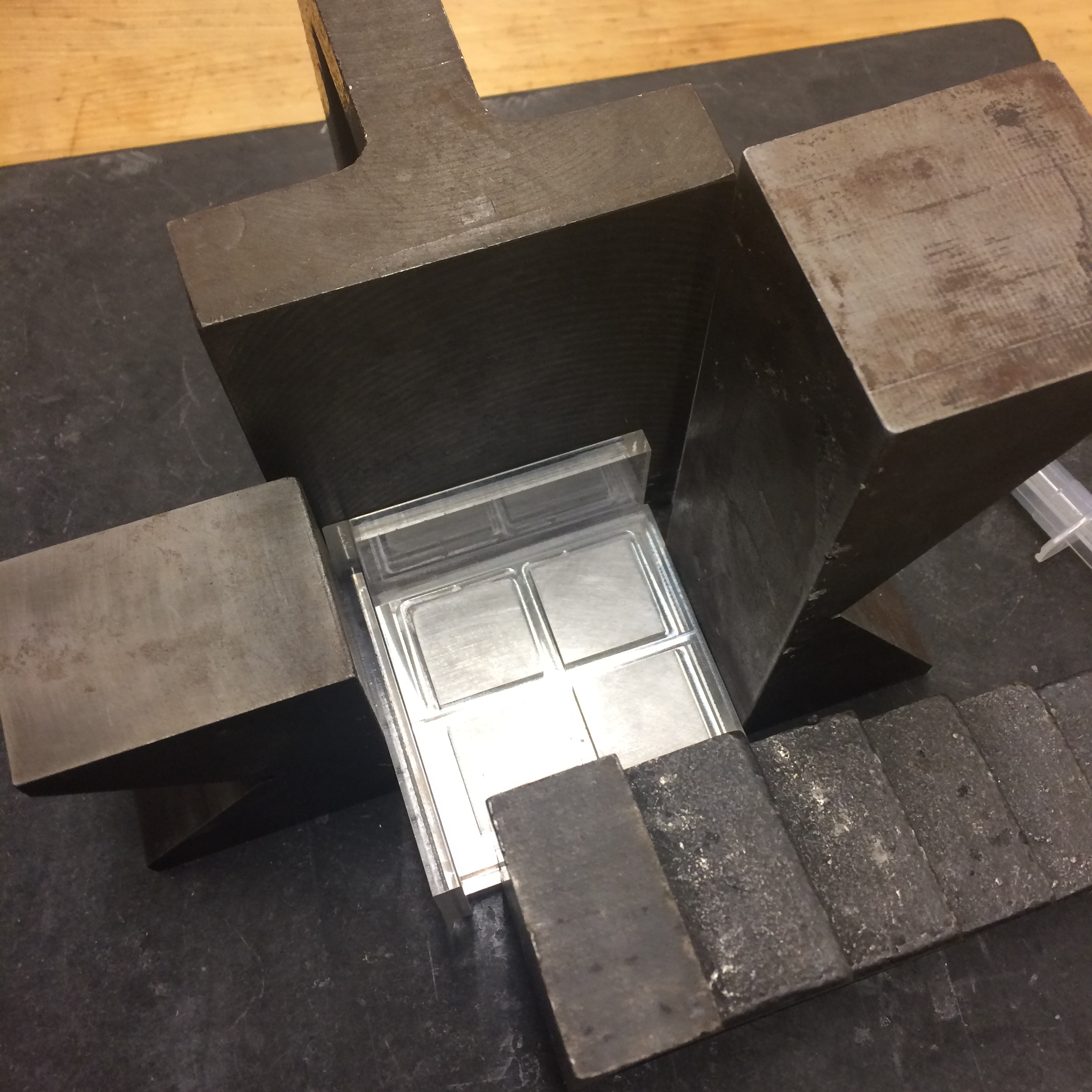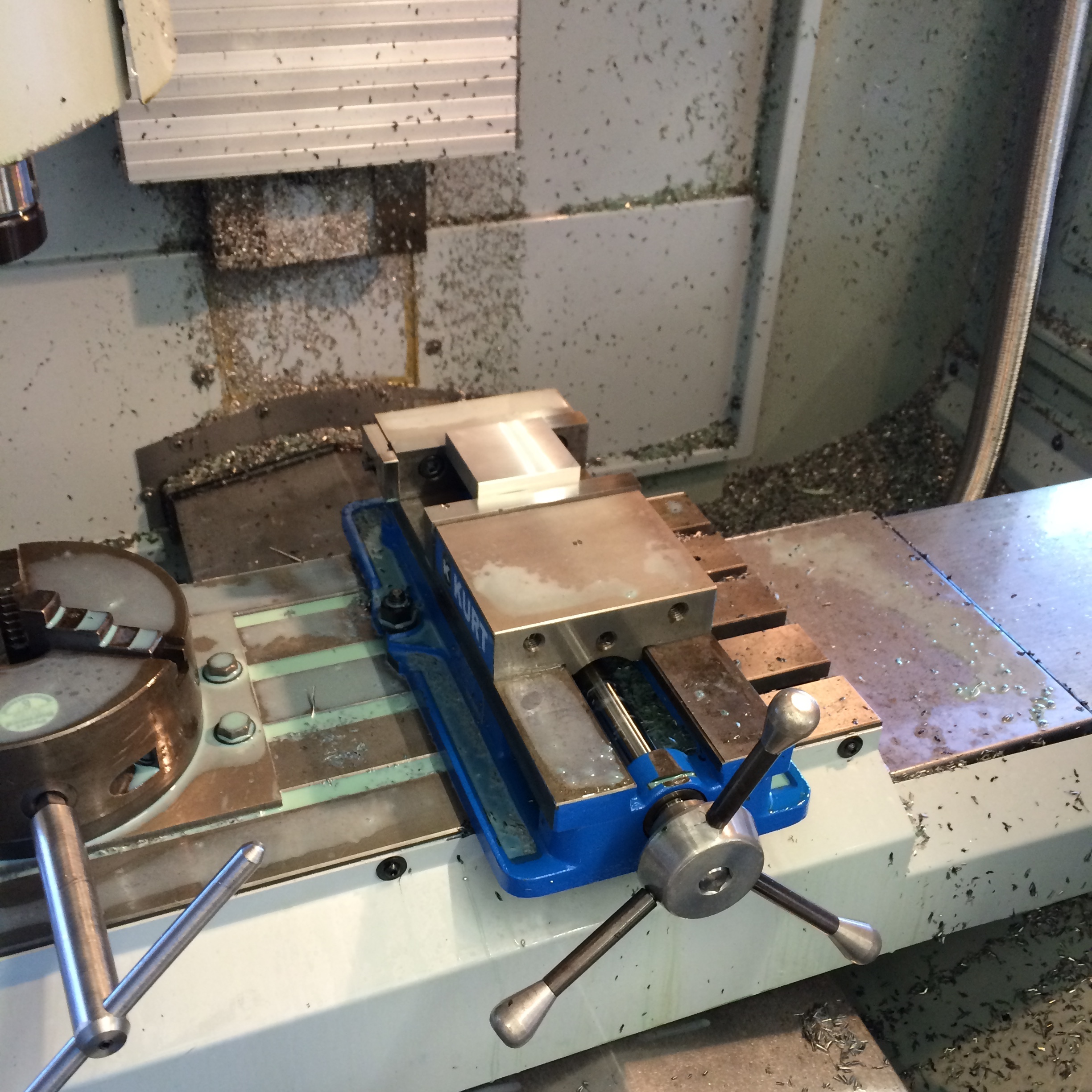My boss put me on a team to design and fabricate the hardware required for a new activity being developed. The activity is centered on Quantum Dot (QD) technology. The basic concept is that these nano-scale QDs emit single wavelengths of light when excited by UV light. The emitted wavelength is related to the radius of the QD, so larger QDs emit longer wavelengths. Typically, QDs are stored in a liquid solution which is toxic and dangerous for children to handle. However, it is possible to embed QDs in a plastic polymer which is safe for children to handle. The plastic is made by creating a solution of QDs in the polymer, pouring the solution into a mold, and vacuum baking the solution to harden the plastic in the mold.
The plastic itself is clear until you illuminate it with UV light. Once illuminated with UV light, the QDs inside the plastic will emit light, causing the plastic to glow! We plan on making lots of plastic pieces with different sized QDs in them (the QD sizes will correspond to different colors) and having students arrange the plastic pieces on a grid to make a picture of something. These plastic pieces will essentially be pixels in that sense. They will insert their arrangement of pixels into a UV light-box consisting of of a UV source, a UV transparent platform to lay the arrangement on, and a UV resistant shield for viewing the glowing arrangement.
There are three issues I have identified as being critical to the success of the project:
Safety. We need to ensure that the children cannot activate the UV source while the UV shield is not installed, to be sure that the children will not be exposed to the UV rays. We also need to assess the effectiveness of the UV shield.
Light Source Requirements. We need to ensure that our light source emits UV light at the correct wavelength to excite the QDs, and that the intensity of the UV rays is high enough that the pixel arrangement will glow visibly and impressively to the students. We are currently leaning towards using an array of UV LEDs underneath the arrangement to ensure all the pixels receive an equal light intensity.
Casting the Pixels. Currently the pixels are cast in an off the shelf silicone mold used for baking. The plastic parts from the mold are roughly rectangular, but have many imperfections and low dimensional repeatability. We need to develop a mold/molding process that results in repeatable, rectangular plastic pieces that will fit together on a grid. Fitting together multiple pieces in a grid will result in a tolerance stackup. So the smaller we decide to make the pixels, the more we can fit in the grid, and therefore the tighter the tolerance on each pixel will have to be to guarantee the same degree of alignment on the grid.

